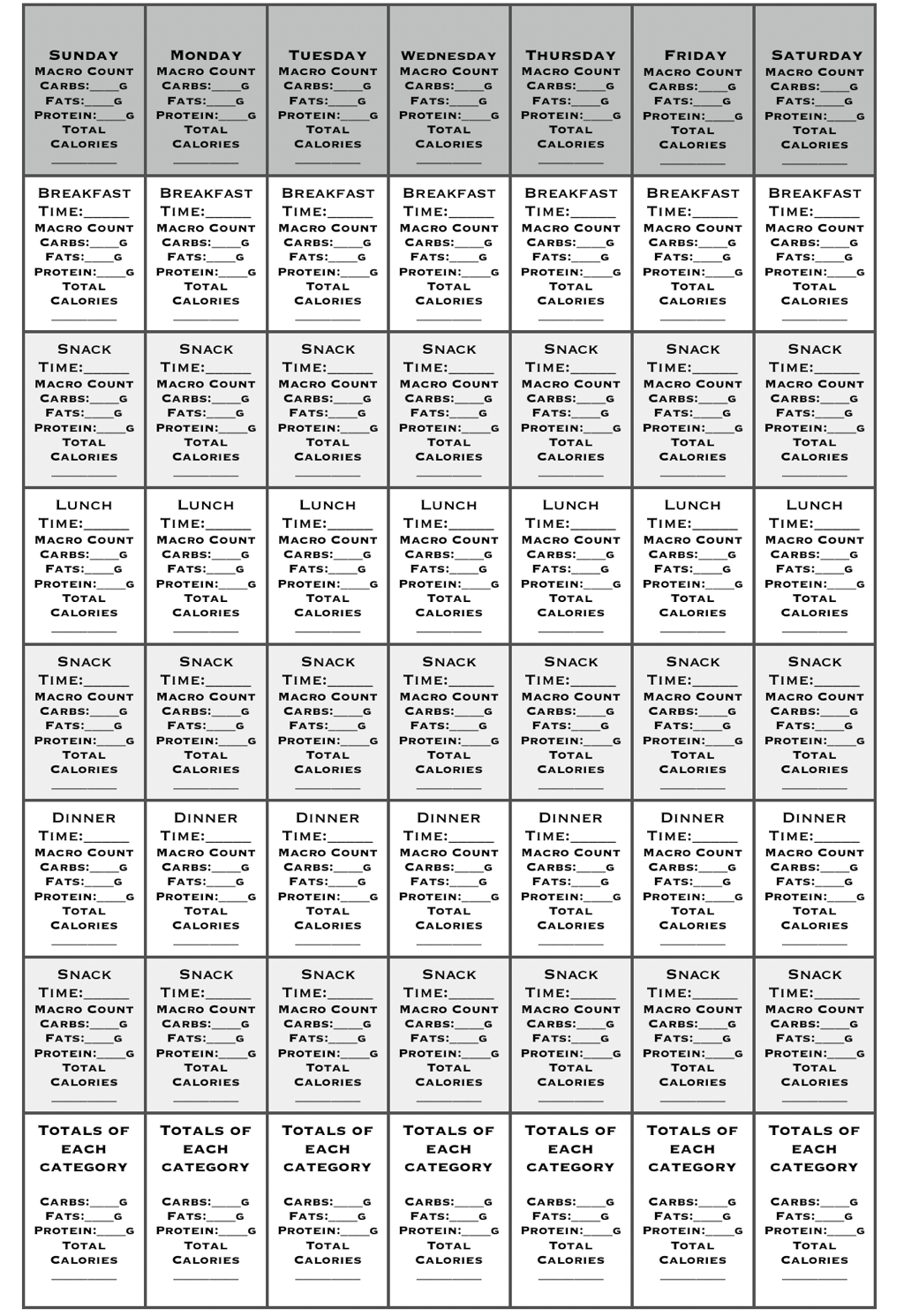Using the information you know about your macronutrient & caloric count, your activity levels and food groups develop a meal plan for the week that fits within these ranges. Your caloric intake and macronutrient counts may be different from day today depending on your activity for that day. All this information must be taken into account when properly planning for the body composition you desire. See how many micronutrients you can include in your daily meal plans as well. Here’s an additional challenge, try not to use the same meal two days in a row. Don’t forget to include what you drink and any condiments that you may use. If you are following any specific type of diet plan, have any dietary restrictions or anything else please indicate that at the top of your meal plan.
Here is an example from choosemyplate.gov of a two week meal plan:
| macro_calendar.pdf | |
| File Size: | 24 kb |
| File Type: | |
Now that you have developed a meal plan that will fit your body composition goals, let’s see how well you can adhere to your diet. This week record everything that you eat in these boxes. Life happens, there are certain days where you are going to be very active and need more calories than other days. There are many unexpected life events that can occur that will make you adjust your meal plan. The practice of being aware of what you are eating however, can help you make better decisions to achieve your body composition goals.
Here are some pieces of advice when meal planning:
Here are some questions to ask your self after each thing you eat. Answering these questions can help you get a baseline to help you realize what foods make your body feel good and what foods your body might not like. This will help you get in tune with your body‘s needs. Answer these questions about 20 minutes to 30 minutes after eating. This way food has started it’s digestion process.
Here are some pieces of advice when meal planning:
- Exercising after a big meal could cause an upset stomach, nausea and cramping. To make sure that you have enough energy during exercise make sure that you are getting your lower glucose carbohydrates that will be burned in a timely fashion when exercising. Higher glycemic carbohydrates absorbed into your bloodstream quickly and can cause a crash in energy. Usually wait 1 to 4 hours depending on how much you’ve eaten before any exercise.
- As you become more active in more activities you’ll find that meal planning becomes more and more important every day. For instance, if you had an all day dance competition to be at you would want to consider what time your dances would be at so that you’re not trying to dance on a full stomach or an empty stomach.
Here are some questions to ask your self after each thing you eat. Answering these questions can help you get a baseline to help you realize what foods make your body feel good and what foods your body might not like. This will help you get in tune with your body‘s needs. Answer these questions about 20 minutes to 30 minutes after eating. This way food has started it’s digestion process.
- Do I feel nauseous?
- Do I have a headache?
- How hungry was I when I ate this? (When we are hungry and crave food more, it tends to taste better and feel more nourishing after eating it)
- Am I still hungry?
If you don’t have access to a meal planning app like:
Then use some of my “Nutrition Pins” from Pinterest 🍽

















































